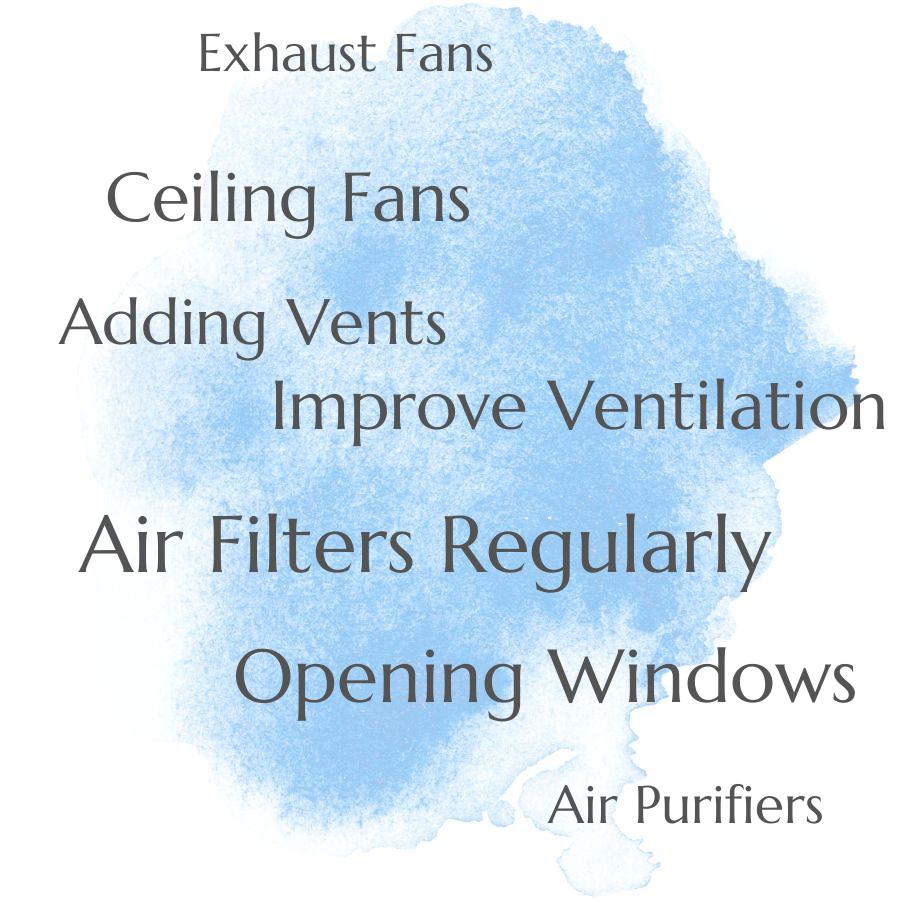There are several ways to improve ventilation in your home, including: installing an exhaust fan, opening windows and doors regularly, using air conditioning units with fresh air intakes, adding vents or ducts to rooms that don’t have them already, and using ceiling fans to circulate air.
Having proper ventilation in your home is essential for maintaining a healthy and comfortable living environment. Poor ventilation can lead to issues such as mold, mildew, and poor air quality.
Fortunately, there are a few simple and effective ways to improve the ventilation in your home. In this blog post, we’ll discuss some of the best methods for improving the air quality in your home.
Installing Ceiling Fans

Ceiling fans are designed to circulate air throughout the room, creating a cooling breeze and helping to reduce humidity levels. By installing ceiling fans, you can create a more comfortable environment in your home while also improving air quality.
Ceiling fans come in various sizes and styles, so it’s important to choose one that fits the size of your room and complements the existing décor. Many modern ceiling fan models feature energy-efficient motors that use less electricity than traditional models, making them an economical choice for improving ventilation in your home.
Opening Windows
By opening windows, fresh air can enter the home, while stale air is pushed out. This helps to reduce humidity levels and keep the air inside your home clean and healthy.
Opening windows allows natural light into your home, which can help to brighten up dark rooms and make them more inviting. Opening windows also provides an opportunity for some natural cross-ventilation; when two or more open windows are located opposite each other in different rooms, they create a draft that helps move air throughout the house.
Using Air Purifiers
Air purifiers work by drawing in air from the room, filtering out pollutants and allergens, and then releasing clean air back into the environment. This helps to reduce indoor air pollution, which can be caused by dust mites, pet dander, mold spores, smoke particles and other airborne contaminants.
Air purifiers also help to reduce odors in the home as they filter out unpleasant smells such as cooking odors or cigarette smoke. Using an air purifier can help to reduce humidity levels in your home which can lead to improved comfort levels for those living inside.
Installing Exhaust Fans
Exhaust fans are designed to draw air out of the room, creating negative pressure and allowing fresh air to enter through other openings. This helps reduce humidity levels, remove odors, and keep the air circulating throughout the house.
Exhaust fans can be installed in bathrooms, kitchens, laundry rooms or any other area that needs improved ventilation. They come in various sizes and styles so it’s important to choose one that fits your space properly.
They should be connected directly to an outside vent for optimal performance. Installing exhaust fans is a great way to ensure proper airflow throughout your home and maintain healthy indoor air quality.
Replacing Air Filters Regularly
Air filters are designed to capture dust, dirt, and other airborne particles from the air that passes through them. Over time, these filters become clogged with debris and can reduce the amount of airflow in your home.
Replacing them on a regular basis helps ensure that your home has adequate ventilation and clean air circulating throughout it. Depending on the type of filter you have, you may need to replace it every month or two months for optimal performance.
If you live in an area with high levels of pollen or other allergens, you may want to consider replacing your filter more often than recommended by the manufacturer.
Adding Vents to Rooms That Don’t Have Them
Vents allow air to flow freely throughout the house, which helps keep it cool and comfortable. Installing vents in rooms without them can be done by cutting holes into walls or ceilings and then installing the vent covers.
This will help ensure that air circulates properly and prevents stale air from becoming trapped in certain areas of the house. Adding vents can also help reduce humidity levels, as they allow moisture-laden air to escape outside instead of building up inside your home.